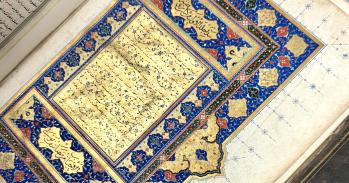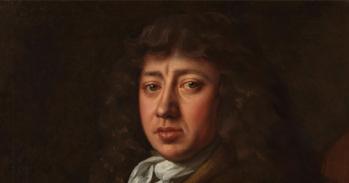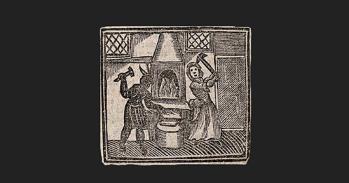Fifth in the series is Eleanor Barnett, a historian examining the relationship between food and religious change during the European Reformations.
My research sets out to
Focusing on England and Italy, I look at how food was used in worship both within and outside of the church, how religion shaped people’s ideas of what was healthy to eat, and how religion impacted on the ways and material environments in which people ate in everyday life.
One of the most important theological changes of the Reformation was the Protestant rejection of the Catholic belief in transubstantiation. I’m interested in how this worked out in what people were actually eating in the Communion.
In England, Elizabeth I wrote in her Prayer Book of 1559 that the Communion bread should be table bread of the best quality, but in the same year the Queen’s Injunctions state that the bread should be more like the pre-Reformation Catholic wafer so that ‘the more reverence to be given to these holy mysteries’. She called for the traditional stamp to be removed from the wafer and for the wafer to be made a little wider and thicker.
This is interesting because it shows that whilst, in accordance with a changed understanding of grace and salvation in Protestant theology, there was a drive in Elizabethan England to remove material things that could be worshiped, there remained a desire to make sure that what you were commemorating was still reflected in material properties. So in this case, the bread still had to be in some way special.
At the start of Elizabeth’s reign, attempts were made to enforce the Injunctions but by the 1570s, it became clear that table bread was more commonly used.
My Motivation
The most important thing for me is to understand how people experienced religion in the early modern period. More specifically, I hope to get across that people in the past were not intellectualized beings always concerned with theology, but were interacting with their bodies and the material environment every day in ways that reflected or enforced their religious identity. Food is a really useful way to explore the lived experience of what it meant to be a Protestant or a Catholic in this period.
Everyone has to eat so food is a great way for us in the twenty-first century to connect with people in the past on a human level. Food was and remains so central to human identities.
I’m really interested in public history initiatives and I’m an Editor for the blog,
Doing History in Public so my research topic and philosophy as a historian go hand-in-hand.
My best days
A highlight for me has been looking at the really unusual and significant Elizabethan records at King’s College, Cambridge. These record day-by-day what was being eaten in the College. This is invaluable evidence for me because its shows how far people were adhering to the Church’s instructions regarding food, in particular what could be consumed on the weekly Fish Days, Lent and religious feast days.
I discovered that throughout the period, King’s College adhered to eating fish on Friday and Saturday and avoiding meat during Lent. There were, however, times in Lent when the College was prepared to celebrate. In 1560, the Feast of Annunciation occurred during Lent and the College hosted a really big feast, five times more expensive than a normal Monday.
I have also seen significant changes in the Elizabethan period reflected in what was happening at King’s. For instance, by 1576 the College had abandoned the Feast of St Barnabas in accordance with the New Calendar, but started celebrating the Queen’s Day on 17 November to celebrate Elizabeth’s coronation.
I hope my work will lead to
My PhD research will contribute to our understanding of what it meant to be a Protestant and a Catholic in Reformation Europe, through exploring the embodied, sensory, and everyday religious experience of eating.
By taking a comparative approach, I hope that this theme will shed new light on the differences between Catholic and Protestant identities, and ultimately comment on the nature of religious change in the Reformation periods.
It had to be Cambridge because
I am lucky enough to have two fantastic historians as my supervisors,
Professor Craig Muldrew and
Professor Ulinka Rublack, and to be further supported by a brilliant wider team of historians. We meet in seminars every week and the graduate students also have workshops where you can share ideas and hear papers.
At the same time, at Cambridge you’re given the freedom to grow as an independent researcher and to develop new skills through practical experience - I am currently improving my Italian and paleographical skills by researching in the Venetian archives!
I particularly like the emphasis on inter-disciplinary work at Cambridge, so for me that means I can speak to art historians and scientists about how the body functions, how it was thought to function in the past, and how this might affect food and consumption practices in the Reformation period.
It’s an everyday inspiration to be surrounded by art and architecture from the period you are studying, not least in my own College, Christ’s. But Cambridge also plays a much more active role in my research because some of the Colleges hold such rich early modern records.






